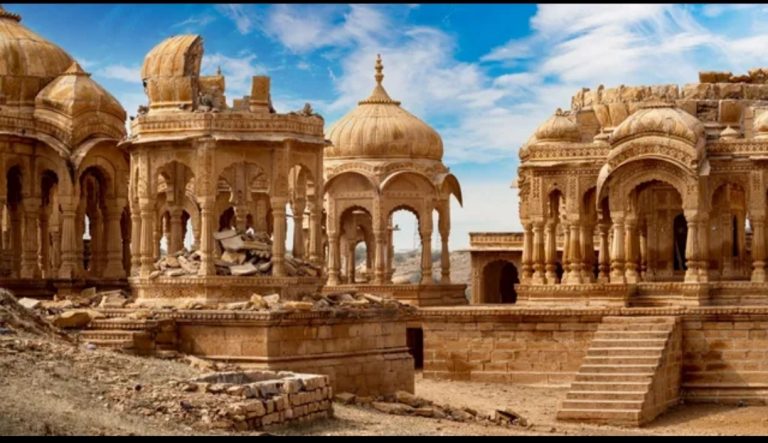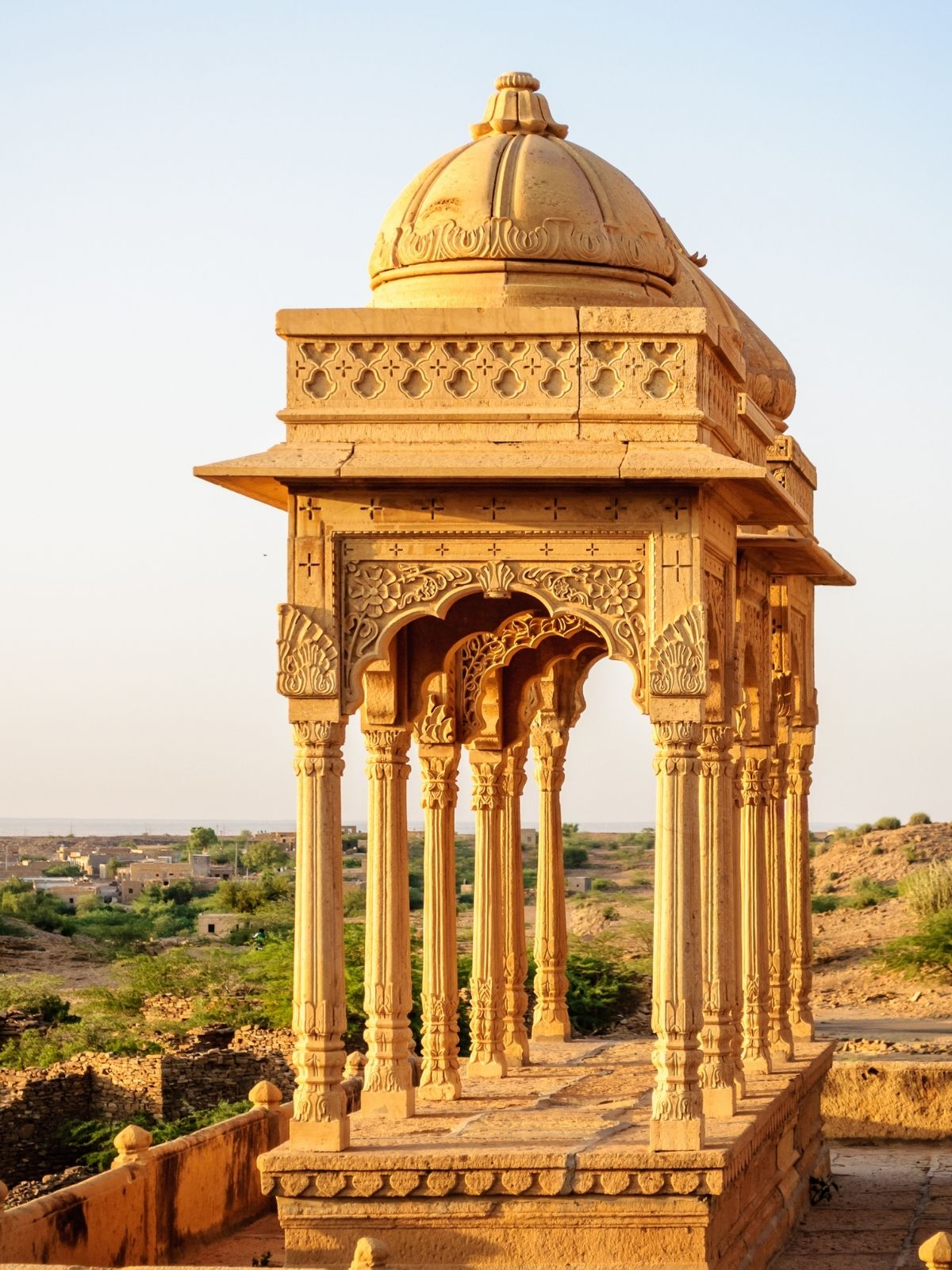
Although the name suggests abundant greenery, the sandstone monuments of Bada Bagh make for an unpredictable surprise
By Ria Gupta
Somewhere amidst the ochre-colored landscape of the Thar Desert, yellow sandstone domes highlight the remnants of a bygone era. These are the cenotaphs of Bada Bagh in Jaisalmer, built in memory of Rajasthan’s royalty. Perched atop a hill, the site offers breathtaking views of the horizon and the ever expanding desert. Every evening, the empty tombs are bathed in an orange glow as the sun begins to set in their backdrop. But no flowers bloom in its surroundings, and barely any greenery is visible across the landscape. Why then, is it called Bada Bagh?
Bada Bagh, Jaisalmer
The memorial site was built as a garden complex and expanded by the Bhatti rulers of Rajasthan. Its first monument was set up in memory of Raja Jaitsi II, who ruled the kingdom in the early 16th century. It is said that during his reign, he built a tank (called Jait Sar) and a dam (called Jait Bandh) at this spot six kilometers from the city to create a lush oasis in the otherwise barren land. The dam was about 1,200 feet in length, 300 feet in width and 100 feet in height. Irrigational channels were laid to take the water from the reservoir to the land around it.
The Raja’s actions bore fruit, and soon the land was thriving with cultivation. Mangoes, date palms and other fruits grew aplenty. The green landscape lent the name Bada Bagh to the area. After his death, the efforts were continued by his successors and additions included a mango orchard and several stone cenotaphs. From there began the tradition of erecting monuments of stone in memory of the Rajputs who ruled over Jaisalmer until the 20th century.
 The last cenotaph to be built was of Maharawal Jawahir Singh however, it was never completed. His son, Maharawal Girdhar Singh, died when the construction was only midway. Local folklore says that the mishap was considered so inauspicious that the site was abandoned immediately, and remained so until it fell into complete disarray. Since then, the garden complex has become an object of neglect, with many of its trees wilting to death while the exceptional stone structures stand strong against the winds of time.
The last cenotaph to be built was of Maharawal Jawahir Singh however, it was never completed. His son, Maharawal Girdhar Singh, died when the construction was only midway. Local folklore says that the mishap was considered so inauspicious that the site was abandoned immediately, and remained so until it fell into complete disarray. Since then, the garden complex has become an object of neglect, with many of its trees wilting to death while the exceptional stone structures stand strong against the winds of time.
Every memorial or chattri built here had a story to tell. The shape of the domes revealed the identity of their makers—pyramid domes were made by Muslim sculptors, while the round ones were created by Hindus. The base of all chattris would be either square or hexagonal. Smaller chattris were constructed for the women, while the monuments for kings were humongous in size, with exquisite carvings adorning the domes that sheltered statues of the most superior rulers. Every cenotaph housed an inscribed tablet of about four feet in height. On it was sculpted the face of the king with a description about him. Other tablets depicted images of his wives and concubines, and showed him on a horse. A conversation with a local might reveal more about the detailing including the fact that the position of the horse revealed whether the king died in battle or suffered a natural death.
Spend the day at Bada Bagh deciphering the carvings and wait till dusk falls to see the monument of memories turn into a golden mirage.
______________________
Courtesy: Conde Nast Traveller